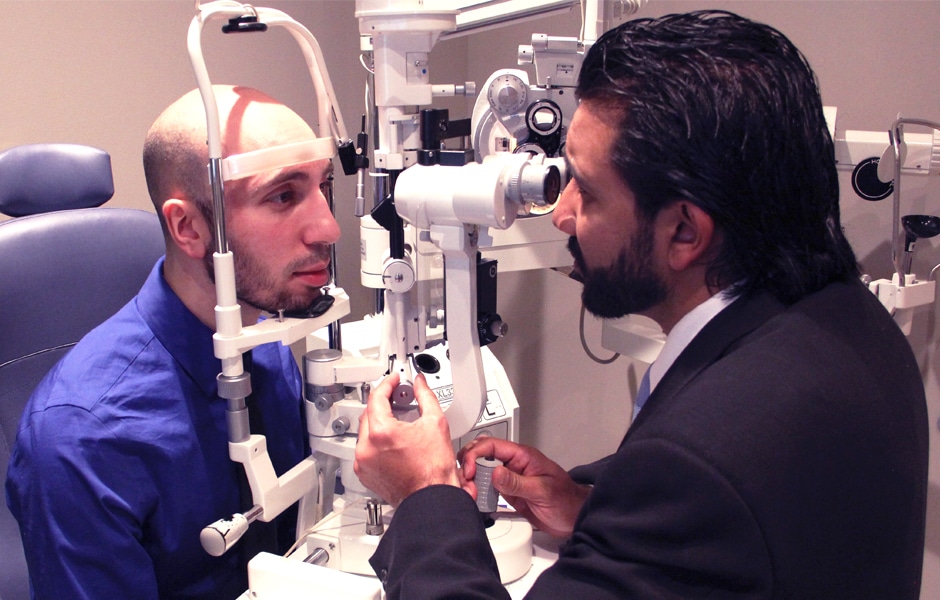Understanding the Different Vision Correction Procedures Available for Clearer View
In the realm of vision improvement procedures, a wide range of options exist to resolve refractive errors and give individuals with more clear view. Let's explore the details of these procedures and shed light on the course to accomplishing improved vision clarity (Eye Center Andalusia).
LASIK Surgical Procedure
LASIK surgical treatment is an usual refractive treatment made use of to fix vision issues such as farsightedness, nearsightedness, and astigmatism. This medical technique, which stands for Laser-Assisted in Situ Keratomileusis, aims to reshape the cornea to improve exactly how light is concentrated on the retina, inevitably improving vision clarity.
One of the primary advantages of LASIK surgical procedure is the rapid improvement in vision experienced by people. Lots of individuals see a significant improvement in their vision quickly after the procedure. In addition, many patients report very little pain and pain during the surgical treatment and recuperation duration. The recuperation time for LASIK is reasonably fast, with many people going back to their everyday tasks within a day or 2 post-operation. Generally, LASIK surgical treatment is a preferred option for individuals seeking a lasting service for their vision issues.
PRK Treatment

PRK is an ideal choice for people with thin corneas or those at a higher threat of eye injuries, as it does not involve developing a corneal flap. The healing procedure for PRK is a little longer contrasted to LASIK, as the epithelium needs time to regenerate. People might experience discomfort and fuzzy vision for a couple of days following the treatment.
Regardless of the longer recuperation time, PRK can yield exceptional outcomes in vision enhancement, making it an important choice for those who might not appropriate prospects for LASIK surgical procedure. - Eye Center Andalusia
Implantable Lenses
Unlike PRK where the cornea is reshaped straight, implantable lenses provide one more method for fixing vision by putting artificial lenses inside the eye. This procedure is particularly helpful for individuals with high degrees of farsightedness, astigmatism, or nearsightedness who may not be appropriate prospects for laser surgical treatments like LASIK or PRK.
Implantable lenses, also referred to as phakic intraocular lenses, job by supplementing the eye's all-natural lens with a man-made one. These lenses can be positioned before the all-natural lens (anterior chamber) or behind the iris and before the natural lens (posterior chamber) By readjusting the power and positioning of these lenses, eye doctors can efficiently remedy refractive errors and enhance visual skill.
One benefit of implantable lenses is that they are removable and exchangeable, giving adaptability for future adjustments. Nonetheless, as with any kind of surgery, there are dangers included, such as infection or cataract development. Individuals thinking about implantable lenses should seek advice from with an eye care specialist to determine one of the most ideal alternative based upon their private needs and eye wellness.
Corneal Rings

The treatment for putting corneal rings is minimally intrusive and reasonably fast, commonly performed as an outpatient procedure. During the surgical treatment, the ophthalmologist makes a little incision in the cornea and inserts the rings at a details deepness. Once in position, the rings help to improve the cornea, providing a smoother surface area for light to go into the eye, which can cause more clear vision.
Corneal rings are thought about a relatively easy to fix procedure, as they can be gotten rid of or replaced Check Out Your URL if required. While they might not totally remove the requirement for glasses or call lenses, corneal rings can considerably boost vision top quality and total visual convenience for people with keratoconus or other corneal irregularities.
Refractive Lens Exchange
Adhering to the improvement of corneal abnormalities with procedures like corneal rings, another vision correction technique that can address refractive mistakes is Refractive Lens Exchange (RLE) RLE is a surgical procedure that involves replacing the eye's natural lens with a synthetic intraocular lens (IOL) to correct refractive mistakes such as presbyopia, farsightedness, and nearsightedness. This treatment is specifically advantageous for people that might not appropriate candidates for procedures like LASIK or PRK due to elements such as slim corneas or high refractive mistakes.
Recuperation time for RLE is relatively quick, and patients can expect improved vision quickly after the treatment. As with any kind of medical procedure, potential dangers and issues exist, so a comprehensive examination with an eye care expert is crucial to view it now figure out if RLE is the appropriate vision correction option.
Final Thought

In the realm of vision modification treatments, a wide range of options exist to resolve refractive mistakes and provide people with more clear sight.LASIK surgical procedure is a common refractive procedure used to deal with vision issues such as astigmatism, nearsightedness, and farsightedness.While likewise a typical refractive procedure, the PRK (Photorefractive Keratectomy) technique differs from LASIK surgical procedure in its technique to remedying vision issues.Following the improvement of corneal abnormalities with treatments like corneal rings, an additional vision adjustment method that can resolve refractive errors is Refractive Lens Exchange (RLE) LASIK surgical treatment, PRK treatment, implantable lenses, corneal rings, and refractive lens exchange are all choices that can address various vision problems.